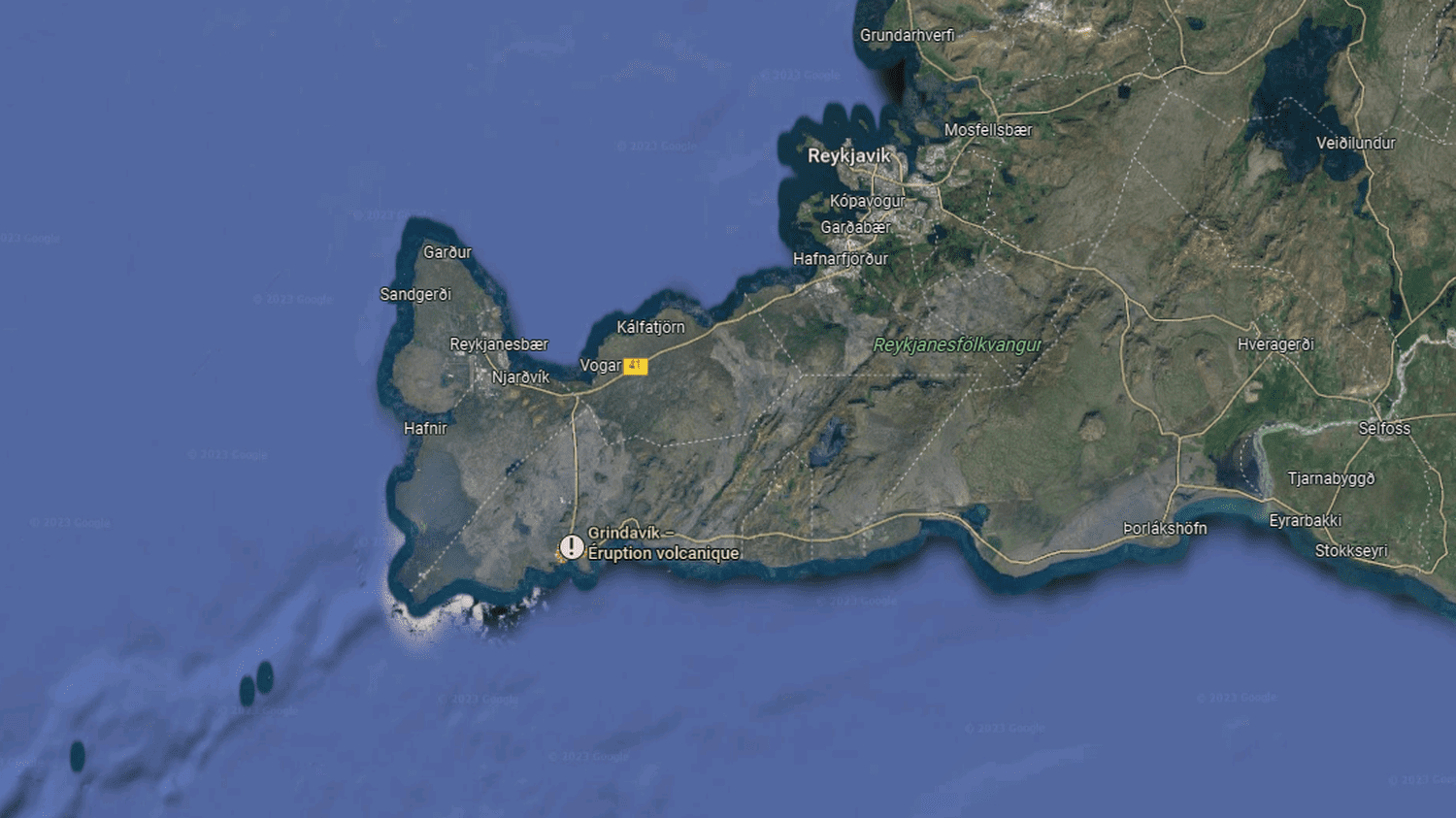Meteorological services observed an intrusion of magma in the Grindavik sector, a town located in the southwest of the island.
Published
Update
Reading time :
1 minute

The town of Grindavik, in southwest Iceland, was evacuated during the night from Friday November 10 to Saturday November 11, because authorities fear a volcanic eruption near homes. Iceland has declared a state of emergency after a series of powerful earthquakes shook the southwest of the Reykjanes Peninsula, which could be a precursor to a volcanic eruption near Sundhnjukagigar, in some 3 km north of Grindavik. The city is now deserted, specifies the Icelandic media RUV, “with the exception of the police officers manning the roadblocks”.
Iceland’s weather service initially said an eruption was likely “in several days rather than in a few hours”, after observing that magma had accumulated for several days beneath the Earth’s surface, at a depth of approximately 5 km. Then, at the end of the day, the weather services noticed that the seismic activity was getting closer to the surface and that the magma was starting to rise vertically towards the earth’s crust between Sundhnjukagigar and Grindavik.
A very high quantity of magma
Civil Protection evacuated Grindavik after the weather service warned that it was “probable that a magma intrusion has spread” below this city. “At this stage it is not possible to determine exactly if and where the magma might reach the surface”, added the meteorological services. They noted that “the quantity of magma involved is significantly greater than what was observed during the largest magma intrusions associated with the [trois] Fagradalsfjall eruptions”in March 2021, August 2022 and July 2023.
The town of Grindavik, population 4,000, is near the Blue Lagoon geothermal spa, a popular tourist destination that temporarily closed earlier this week as a precaution. The town is also close to the Svartsengi geothermal power plant, the main supplier of electricity and water for 30,000 residents of the Reykjanes Peninsula.
